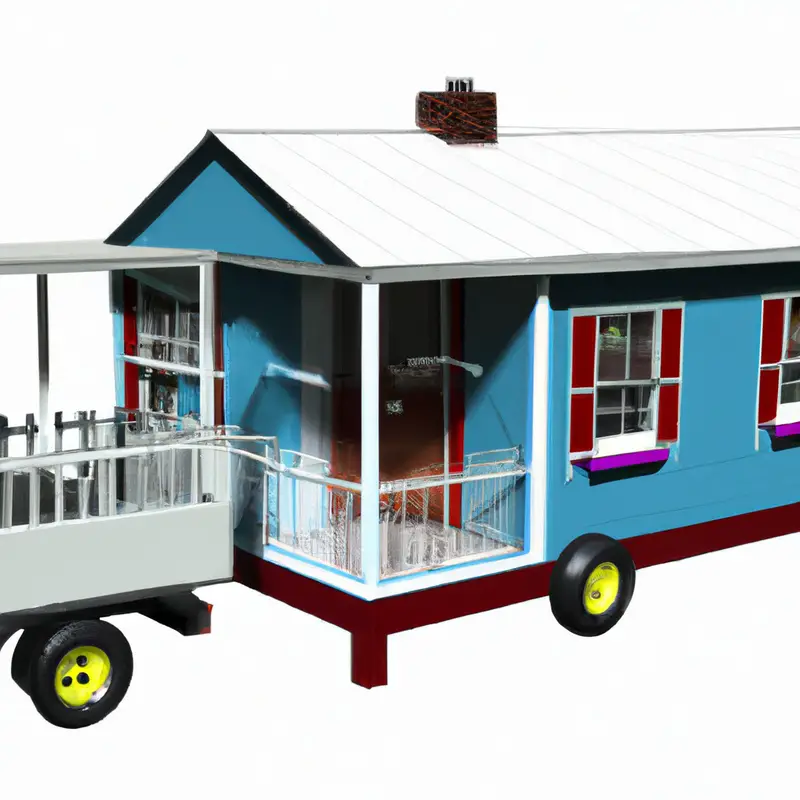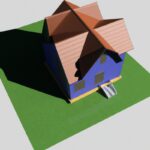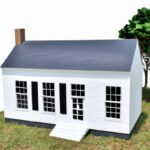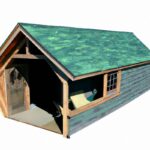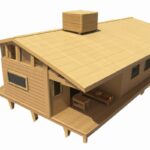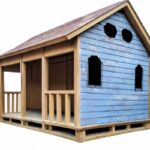Key Takeaways:
- Tiny houses are small, compact homes typically under 400 square feet in size.
- These dwellings offer a simpler and more minimalist lifestyle characterized by lower expenses and reduced environmental impact.
- Tiny houses are often customizable and can be built on wheels or a foundation, making them flexible and mobile.
- Despite their size, tiny houses can still offer functionality and comfort through clever design and space-saving techniques.
Have you ever dreamed of simplifying your life and downsizing to a home that is just the right size for your needs? Well, let me introduce you to the world of tiny houses.
These small, innovative dwellings have been gaining popularity and capturing the hearts of many people looking to embrace a minimalist lifestyle.
From their clever space-saving designs to their eco-friendly features, tiny houses offer a unique and practical living solution. In this article, we’ll explore the design, features, and benefits of tiny houses, as well as the challenges and considerations that come with this alternative way of living.
So, are you ready to discover the big world of tiny houses?
Let’s jump right in!
Category | Definition |
Size | A tiny house is typically between 100 and 400 square feet, with some variations. |
Cost | Tiny houses can range from $20,000 to $150,000, depending on location, size, materials, and customization. |
Design | Most tiny houses are designed to maximize space efficiency, often incorporating multifunctional furniture and creative storage solutions. |
Environmental Impact | Due to their small size, tiny houses generally have a smaller carbon footprint and require less energy to heat and cool compared to traditional homes. |
Mobility | Some tiny houses are built on wheels, allowing for easy transport and mobility. |
Regulations | The regulations regarding tiny houses vary depending on location and local zoning laws. |
Benefits |
|
Considerations |
|
Design and Features of Tiny Houses
Size and Layout of Tiny Houses
Tiny houses typically have a compact size, ranging from around 100 to 400 square feet.
The small size is intentional, as it allows for greater mobility and flexibility.
Despite their small footprint, the layout of tiny houses is cleverly designed to maximize space and functionality.
Design elements such as loft bedrooms, built-in storage solutions, and multi-functional furniture are common features in tiny houses.
The open floor plans and efficient use of vertical space create a sense of openness and make the most of every square inch.
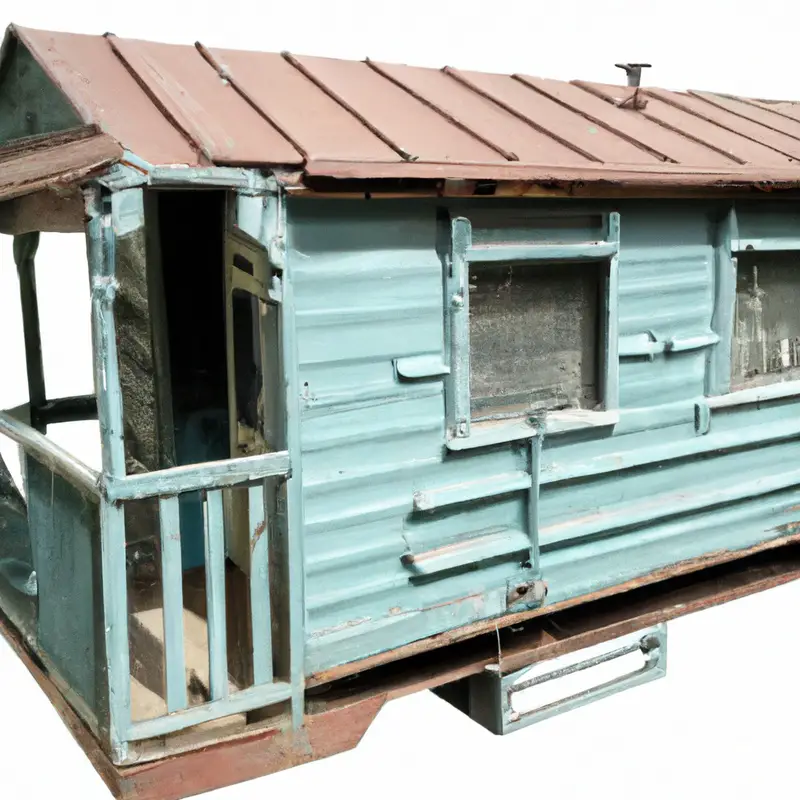
Innovative and Space-Saving Features
Innovative and Space-Saving Features are key aspects of tiny houses that allow for maximum functionality in limited space. Here are some notable features:
- Lofted sleeping areas: By utilizing vertical space, lofted sleeping areas free up valuable floor space for other activities.
- Multifunctional furniture: From convertible sofas to foldable tables and hidden storage compartments, multifunctional furniture maximizes functionality while minimizing clutter.
- Compact appliances: Tiny houses often feature compact appliances such as mini-fridges, combination washer-dryer units, and drawer dishwashers, which save space without compromising on convenience.
- Creative storage solutions: Clever storage solutions, like built-in shelving, under-stair storage, and hanging organizers, help optimize every nook and cranny of a tiny house.
- Integrated technology: Smart home features, such as automated lighting, temperature control, and remote-operated systems, add convenience and efficiency to tiny house living.
These innovative and space-saving features allow tiny house owners to live comfortably and efficiently in a smaller footprint.
Sustainability and Eco-Friendly Design
Sustainability and eco-friendly design are key aspects of tiny houses.
These small dwellings are designed to minimize environmental impact and promote sustainable living.
Here are some ways in which tiny houses embrace sustainability and eco-friendly design:
- Energy Efficiency: Tiny houses are often built with energy-efficient features such as solar panels, insulation, and LED lighting. These features decrease energy consumption and reduce carbon footprint.
- Use of Recycled Materials: Many tiny houses incorporate recycled and reclaimed materials into their construction. This not only reduces waste but also gives a unique character to each home.
- Water Conservation: Tiny houses typically use low-flow fixtures and water-saving technologies to minimize water usage. This promotes water conservation and sustainability.
- Sustainable Building Materials: Tiny house builders prioritize the use of sustainable building materials such as bamboo, cork, and salvaged wood. These materials are renewable and have a lower environmental impact compared to traditional construction materials.
- Composting Toilets: Some tiny houses incorporate composting toilets, which eliminate the need for water-intensive flush toilets. Composting toilets transform human waste into nutrient-rich compost, reducing water consumption and waste.
Overall, tiny houses prioritize sustainability and eco-friendly design through energy efficiency, use of recycled materials, water conservation, sustainable building materials, and composting toilets.
By embracing these practices, tiny house owners can reduce their environmental footprint and live in harmony with nature.
Living in a Tiny House
Financial Considerations and Cost Savings
Living in a tiny house can offer significant financial savings compared to a traditional home. The lower upfront cost of a tiny house allows you to become a homeowner without a large mortgage.
Additionally, tiny houses have significantly lower utility bills and maintenance costs.
With a smaller space to heat, cool, and maintain, you’ll save money each month. Embracing a minimalist lifestyle also helps reduce expenses and encourages conscious spending.
Overall, living in a tiny house offers an opportunity for financial freedom and a simpler, more sustainable way of life.
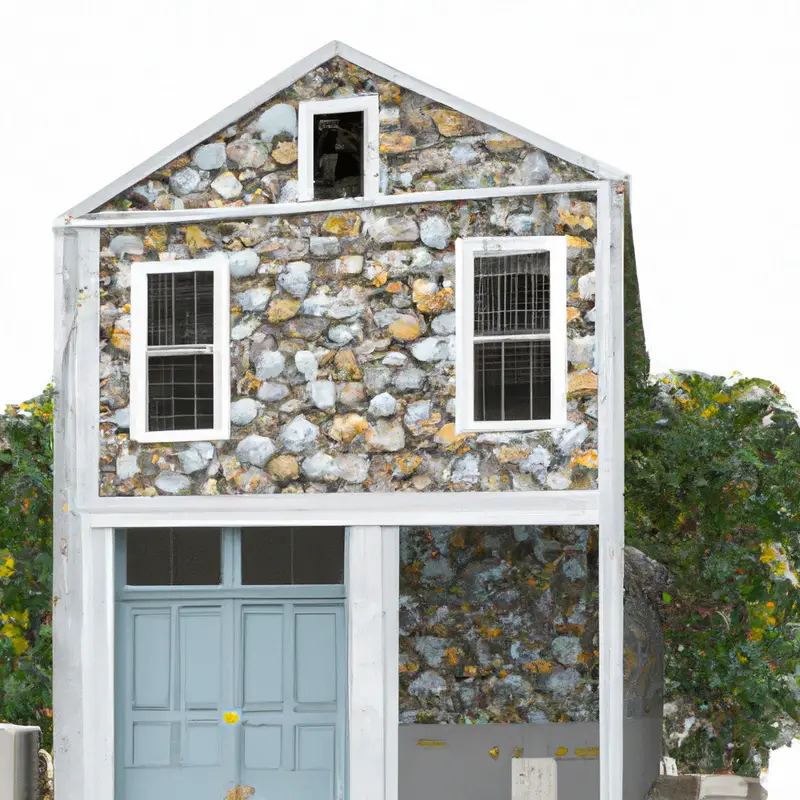
Challenges of Living in a Tiny House
Now, let’s talk about the challenges of living in a tiny house. While there are many benefits to living in a small space, it’s important to also consider the potential difficulties.
One of the main challenges is limited storage.
With less room to store your belongings, you’ll need to get creative with your organization and make use of space-saving solutions. Another challenge is privacy.
Living in close quarters means less privacy, so it’s important to establish boundaries and find ways to carve out personal space.
Additionally, living in a tiny house requires a minimalist lifestyle and a conscious effort to downsize and declutter regularly. It can be a challenge to let go of possessions, but it’s necessary in order to make the most of the limited space.
Lastly, dealing with zoning regulations and finding a suitable location for your tiny house can be another hurdle to overcome.
It’s essential to thoroughly research the laws and regulations in your area to ensure that you can legally live in a tiny house and find a location that allows for it.
Tips for Making the Most of Small Space
Living in a tiny house requires some creativity to make the most out of the limited space. Here are a few tips to help you maximize your small living area:
- Multi-purpose furniture: Opt for furniture pieces that serve multiple functions, like a sofa that converts into a bed or a coffee table with storage compartments.
- Utilize vertical space: Install wall-mounted shelves and use hooks to hang items, freeing up floor space. Consider using a loft bed to create extra storage or a small workspace underneath.
- Declutter regularly: Regularly assess and declutter your belongings to avoid unnecessary clutter in your small space. Keep only the essentials and find creative storage solutions for the rest.
- Use mirrors: Mirrors create the illusion of a larger space by reflecting light and making the room appear more open. Place mirrors strategically to maximize their effect.
- Embrace minimalism: Adopt a minimalist mindset and embrace a less-is-more approach. Keep your decor and possessions simple and streamlined for a clean and airy feel.
By incorporating these tips and being mindful of your space, you can make the most out of your small living area and create a comfortable and functional home.
Tiny House Movement and Communities
Origins and Growth of the Tiny House Movement
The Tiny House Movement began to gain momentum in the early 2000s as a response to the growing concerns about housing affordability, environmental sustainability, and the desire for a simpler lifestyle. People started downsizing their living spaces to minimize their carbon footprint and reduce their expenses.
With the rise of social media and television shows dedicated to tiny houses, the movement quickly gained popularity and continues to grow today.
The appeal lies in the freedom it offers – the freedom to live with less, to be more connected to nature, and to prioritize experiences and relationships over material possessions. Tiny houses have become a symbol of conscious living, inspiring individuals to rethink the concept of home and embrace a more minimalist lifestyle.
Types of Tiny House Communities
Tiny house communities come in various forms to cater to different lifestyles and preferences. Some popular types include:
- RV Parks and Campgrounds: Many tiny house owners choose to park their homes in RV parks or campgrounds, where they can enjoy a sense of community and access to amenities like electricity and water hookups.
- Ecovillages: These intentional communities focus on sustainable living and often incorporate shared resources, communal spaces, and eco-friendly practices.
- Pocket Neighborhoods: These communities consist of a cluster of tiny houses arranged around a central shared space, promoting a close-knit atmosphere and fostering social interactions among residents.
- Cooperative Housing: In cooperative housing communities, residents collectively own and manage the property, sharing responsibilities and decision-making.
- Tiny House on Wheels (THOW Communities: These communities are specifically designed for tiny houses on wheels. They often provide designated parking spaces, utilities, and facilities tailored to the needs of THOW owners.
- Backyard Communities: Some homeowners create tiny house communities in their backyards, providing affordable housing options and a sense of community for family members, friends, or renters.
Each type of community offers its own unique benefits and lifestyle, allowing individuals to find the perfect fit for their tiny house living journey.
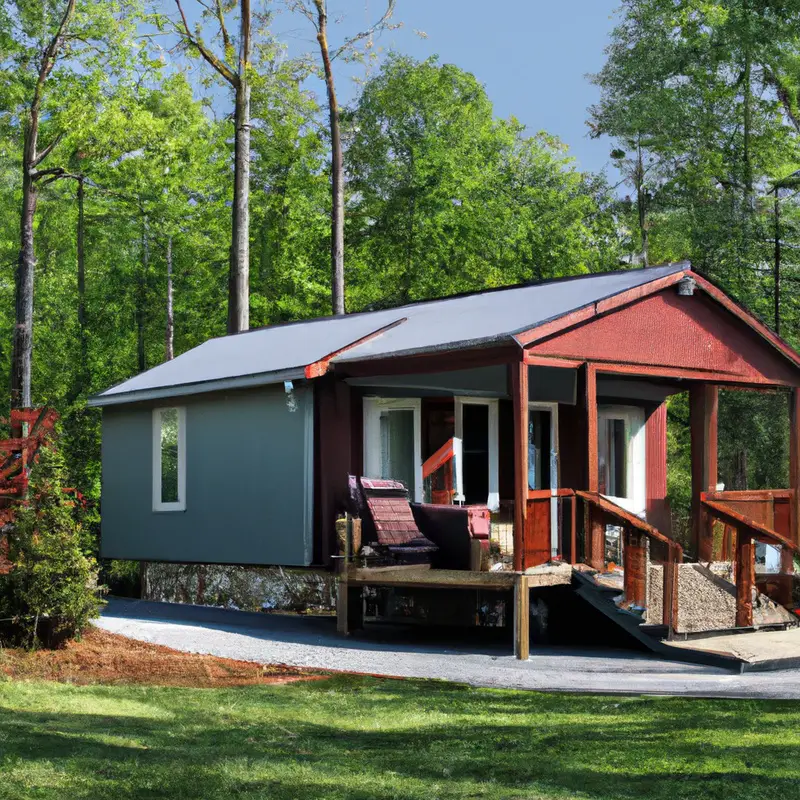
Benefits and Lifestyle in Tiny House Communities
Living in a tiny house community offers several benefits and a unique lifestyle. First, it promotes a sense of community and connection with like-minded individuals who share similar values and interests.
Second, it provides a more affordable housing option that allows for financial freedom and reduced living expenses.
Additionally, living in a tiny house community promotes sustainable living practices and encourages a simpler, clutter-free lifestyle. It also offers opportunities for shared resources, such as community gardens or common areas, fostering a sense of cooperation and collaboration.
Overall, the lifestyle in a tiny house community offers a balance between minimalism and community bonds, creating a fulfilling and meaningful living experience.
Legal and Practical Considerations
Zoning and Building Codes for Tiny Houses
Zoning and building codes are important factors to consider when it comes to tiny houses.
These regulations vary depending on the location, so it’s crucial to do your research and understand the specific requirements in your area.
Some cities and towns have specific zoning laws for tiny houses, while others may require them to be classified as accessory dwelling units.
Building codes dictate the safety standards and construction requirements for tiny houses, ensuring they meet structural and electrical guidelines.
Working with professionals familiar with these codes can help ensure compliance and avoid potential legal issues.
Financing and Insurance for Tiny Houses
Financing a tiny house can be challenging since traditional mortgage lenders are often not accustomed to financing such unconventional homes. However, there are alternative options available such as personal loans, RV loans, and tiny house-specific loans.
It’s essential to shop around and compare rates to find the best financing option for your needs.
As for insurance, tiny house insurance is available, but it can be more expensive than traditional home insurance. It’s important to find an insurance provider that specializes in tiny homes and understands their unique risks and needs.
Keep in mind that insurance requirements may vary depending on whether your tiny house is on wheels or on a foundation.
Be sure to consult with a reputable insurance provider to get the coverage you need.
Choosing the Right Location for a Tiny House
Choosing the right location for your tiny house is a key decision that can greatly impact your overall enjoyment and lifestyle. Here are some important factors to consider:
- Zoning regulations: Research local zoning laws and regulations to ensure that tiny houses are allowed in your desired location. Some areas have specific requirements or restrictions for tiny homes.
- Access to utilities: Consider the availability and cost of connecting your tiny house to essential utilities such as water, electricity, and sewage. Off-grid options may also be worth exploring.
- Climate considerations: Think about the climate in the area you are considering. Does it align with your preferences and the design of your tiny house? For example, if you prefer warm weather, you might choose a location with a mild climate.
- Proximity to amenities: Consider how important it is for you to have easy access to amenities such as grocery stores, healthcare facilities, and recreational opportunities. Think about your lifestyle and the activities you enjoy.
- Community and social factors: Determine if you prefer to be in a rural setting, in a planned tiny house community, or in an urban area. Each option comes with its own advantages and considerations, depending on your lifestyle and personal preferences.
Ultimately, the right location for your tiny house will depend on your specific needs, preferences, and goals. Take the time to thoroughly research and evaluate your options to ensure that you find the perfect spot that suits your lifestyle and allows you to make the most of your tiny house experience.
Final Verdict
Tiny houses offer a unique and sustainable living solution for those seeking a simpler and more intentional lifestyle.
With innovative design features and space-saving solutions, these compact homes can provide all the comforts of a traditional house at a fraction of the cost.
While there are challenges to living in a tiny house, with careful planning and organization, one can maximize the use of space and create a comfortable living environment.
The tiny house movement has gained momentum in recent years, and with the growth of tiny house communities, individuals can enjoy the benefits of a supportive and like-minded community.
However, it is essential to navigate the legal and practical considerations, such as zoning restrictions and financing options, before embarking on the tiny house journey.
Overall, tiny houses offer an opportunity to simplify and live more sustainably, making them an appealing option for those looking to downsize and minimize their environmental impact.
